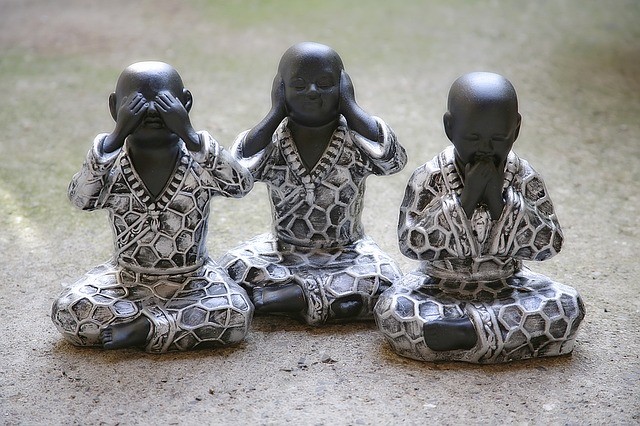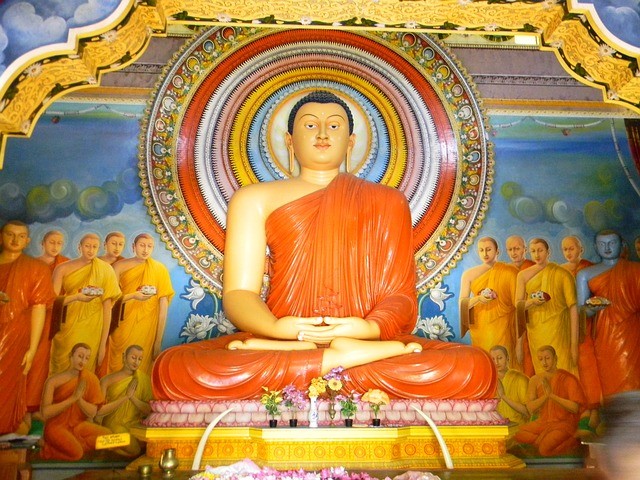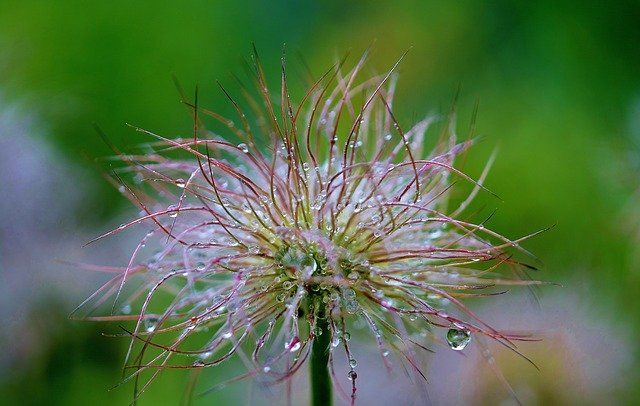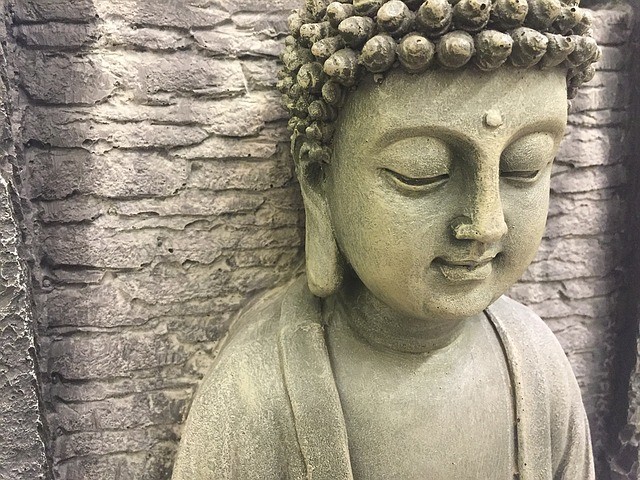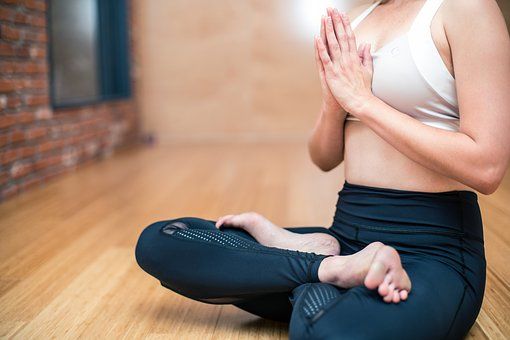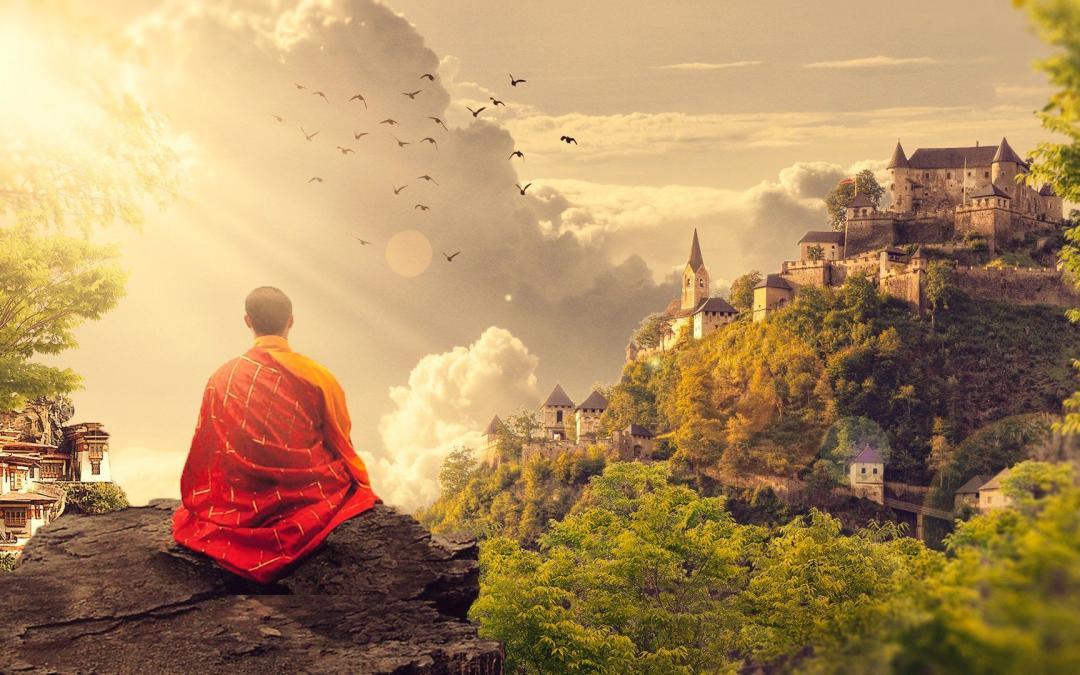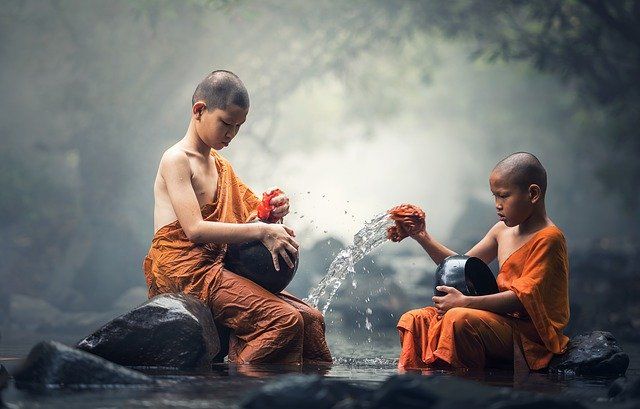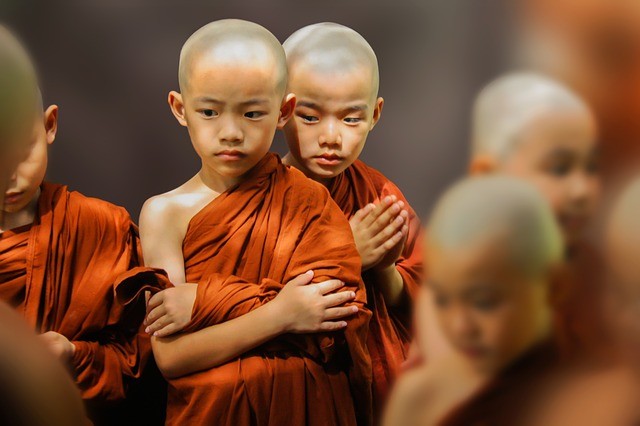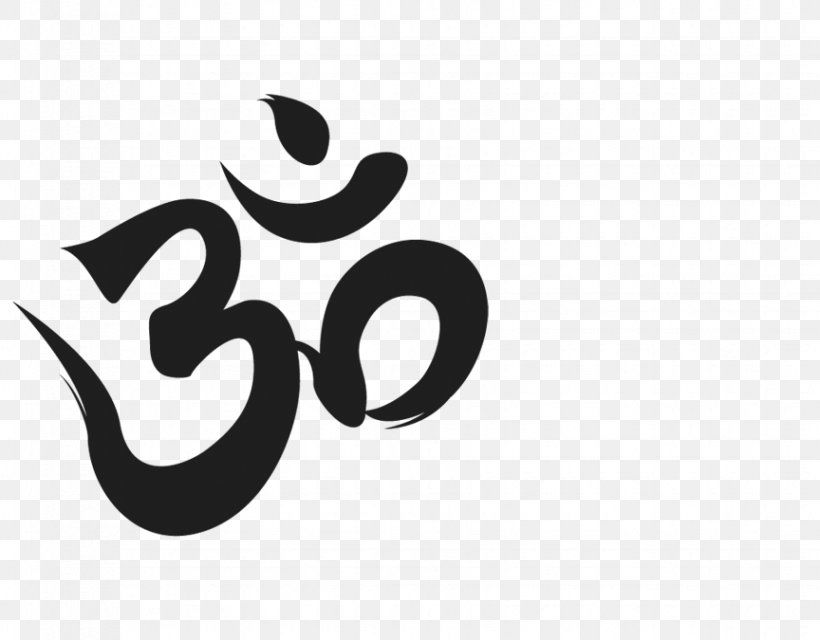
by Tirtha Acharya | Jan 22, 2020 | Blogs
Patanjali has given the most beautiful technique of yoga in his famous book Yoga Sutra. He arranged yoga in a scientific manner making easy to understand and practice. He explained human psychology and managed yoga accordance of the psychological state of people. Brittis are the main cause of the fluctuation of our mind so we have to remove all our Brittis to attain salvation. He separated Chitta Brittis in different five types. Explaining yoga Patanjali stated that “Yogaschittabriti Nirodha.” Yoga is removing of fluctuation of the mind. The five Brittis are as follows:
- Pramana (Correct knowledge)
- Viparyaya (Incorrect knowledge)
- Vikalpa (Imagination or fantasy)
- Nidra (Sleep)
- Smrti (Memory)
The states of our mind can lead us to the destination of different points of their nature. The real knowledge can overcome the fluctuation of our mind. Yoga can maintain the peace of our mind. Five Brittis of our mind can teach how our mind works. If we understand the trick of our mind, we can understand what is real and what is not. To get rid of all the Brittis, we have to practice yoga in our life. Explanation of five Brittis of Chitta:
1.Pramana (Correct knowledge):The word Pramana means the evidence in Sanskrit language, so the real meaning of Pramana is the knowledge which is based on the evidence. Pramana is the knowledge of the reason and logic. Pramana is the knowledge which is based on the direct experience. There are two kinds of knowledge in the world, first one is direct and second is inference which is based on the imagination.
According to Patanjali, the knowledge doesn’t have to be perceived by the five senses but we have to see the practical application in our life of the knowledge. The valid knowledge is the best. We don’t have to believe the knowledge which is said by others. We have to experience the knowledge by ourselves. We have to perceive the real knowledge. We have to distinguish the real and unreal knowledge.
In total, we can say that the real knowledge is the knowledge of our experience. Any of the knowledge is neither real nor unreal but the knowledge becomes real if the knowledge can help us in our practical life.

2. Viparyaya (Incorrect knowledge): sometimes we think that something is correct but if we go into the deep study, we realize that the knowledge is not correct. The incorrect knowledge, which seems to be correct, is called Viparyaya. We imagine something by our limited knowledge to be the real appearance when our illusion disappears, we can understand the reality of the things.
The knowledge which is gained by our five senses is unreal but seems to be very real. Most of the person of the world think real which can be sensed by our five senses but in reality, the knowledge by five senses is not real. When we practice yoga and get enlightened, we know the supreme reality. The supreme reality cannot be affected by the situation.
We may think to swim in the river is very easy but in reality, we can’t swim in the real. Sometimes, we can think the task is very easy from the surface but the reality becomes too hard because we can’t perform the activities in real. So, we have to recognize the reality of the world in the path of spiritual journey. We have to see everything as they are.

3. Vikalpa (Imagination or fantasy):Vikalpa is imagination which we create in our mind by ourselves. This is the truth that we think something is real by our fantasy. Our life becomes whatever we think about our life. If we think life is hard, life will be really hard in the reality. Our subconscious mind doesn’t analyze either something is real or not but it follows what our conscious mind guides it. If we think ourselves as a successful person in our life, we become successful because there into limitation to be successful in our life. If we think we are happy in our life, we become happy in our life. There is not an absolute reality for our subconscious life but in spirituality, our journey begins to the search for the ultimate reality.
In this world nothing is real but all the realities are as our mind creates they are. Our search should go to the search for real knowledge of the universe.

4. Nidra (Sleep):Nidra is the deep sleep which is the state of our mind in which all the thoughts and ideas absent. If we can sleep soundly, we can be refreshed after we wake up from our sleep. In our sleep, we forget our knowledge, everything about ourselves. If unnecessary thoughts disturb us, we can’t sleep well. If we can’t sleep well, we can’t awake in the fresh mood. We cannot be healthy and happy. We have to rest properly and wake up with new inspiration in our life. We don’t indulge in the daydreaming. We have to be aware all the time to walk in the path of enlightenment.
The disturbed mind can’t awake during the day and can’t sleep soundly at the night. We have to overcome all the fluctuations of our mind to be in the path of the higher goal of our life, i.e. yoga. Stress disturbs us in the path of purification.

5. Smrti (Memory):Memory is the way which leads us to the past. By memory, we can be lost in the past days of our life. We can be happy by remembering the happy moments of the past or we can be unhappy by remembering our sad past events. By the vehicle of the memory, we start to live in our past rather than at the present. We think that we should do that and shouldn’t do that in the past. We become trapped in the past and can’t go ahead in our life. Past can’t be corrected so we have to forgive our past and start our journey to the higher achievement. Past can make us crippled and stop us from our purpose of our life.
In reality, we have to be the audience of all types of Brittis of our mind. We don’t have to be attached with any of those Brittis because they can’t lead us to the higher level of spiritual growth. We have to make still our mind by practicing yoga on a regular basis in our life.
The purpose of yoga is to make people aware of their way of life wherever and whoever they are. To make them able to differentiate between what is real and what is fake knowledge. Patanjali focuses on the factor that we don’t have to hang up on unnecessary activities thinking that they are real.

by Tirtha Acharya | Jan 20, 2020 | Blogs
There are many asanas which directly or indirectly helps to burn the calorie faster. Among them, following asanas are important to burn the calorie. The right yoga asana with proper alignment help to lose 180 to 600 calories per hour.
- Chaturanga Dandasana (Four-Limbed Staff Pose)

This is an important asana to burn the calorie. In Chaturanga Dandasana, the palms and toes are fixed on the floor; the body is parallel to the floor without touching the floor with the body. The elbows are bent and placed along the side of the body. Try to stay in the pose for 30 seconds or more.
Contradiction: Avoid the pose if you are suffering from wrist, shoulder or back injury. People with Carpal Tunnel syndrome symptoms should practice only with well guidance of an experienced teacher.
2. Kumbhakasana (plank pose) 
For this asana, fix the palm and toes on the ground keeping the body straight and erect.
It requires entire muscles to hold the position which results to burn the calories.
Kumbhakasana strengthens and tones hands, arm, shoulders, back, buttocks, abs, and thighs.
.
Precaution: Similar to Chaturanga Dandasana.
3. Chakrasana (wheel pose) 
For Chakrasana, lie down on a mat, place the feet near to buttock and palms on the ground behind the shoulder; then lift up the body. It stretches the entire body (especially front portion). You can observe the engagement of the buttocks, legs, shoulders, arms, and thigh. Just staying for 15 seconds, you can burn at least 20 calories. If possible, better to increase the duration gradually.
Precautions: Avoid the asana, or consult with yoga master if there is- Diarrhea, hernia, Blood pressure, Heart problem, pregnancy, pain in wrist, ankle, and spine.
4. Utkatasana (chair pose) 



Utkatasana engages and stretches the largest muscles in the body. So it burns a lot of calories. For Utkatasana bent knees, keeping the body straight raise up the hands and stretch. Try to hold this position for 15 seconds or more.
Precautions: Arthritis, Headache, Knee problems, Insomnia, Low blood pressure.
5. Ardha pincha mayurasana (Dolphin pose) 
For Dolphin pose, fix the hands and feet on the ground. The head should be on the floor between the hands. The leg should not be bent. Ardha pincha mayurasana gives pressure and engages triceps, thighs, and core. This engagement helps to burn calories faster.
Precaution: If you have an injury on shoulder or neck keep the legs bent while practicing the pose.
6. Dhanurasana (Upward wheel pose or Bow pose): 

Halasana burns 3.05 calories per minute. For plow pose, lie flat and with inhalation lift up the legs and waist. Exhale and try to keep the foot on the ground. Legs should be straight. Hold the pose for 10 or more breaths. For advanced practice, hold it for more than 10 minutes.
- Precaution: If you have the problem of liver or spleen disorders, asthma or hypertension, then practice it only under the supervision of an experienced trainer.
- Avoid this pose during following conditions:
Diarrhea, Menstruation, Pregnancy and Neck injury
7. Utthita ashwa sanchalanasana or high lunge pose 

It needs maximum effort and a lot of balance. It makes your body work harder to hold the pose. So, it burns the calories. Normally we begin this pose in Adho Mukha Svanasana. Step right foot forward between the hands with exhalation. Inhale and move the hands upwards with left leg straight back. Exhale and bent the body backward.
- Precaution: Avoid the pose if you have high blood pressure and knee injuries. Do not raise arms above the head if you have shoulder problems, instead place hands on front thigh. Do not bend back if you have neck or spinal injuries.
8. Plow Pose II (Halasana II) 

Halasana burns 3.05 calories per minute. For plow pose, lie flat and with inhalation lift up the legs and waist. Exhale and try to keep the foot on the ground. Legs should be straight. Hold the pose for 10 or more breaths. For advanced practice, hold it for more than 10 minutes.
- Precaution: If you have the problem of liver or spleen disorders, asthma or hypertension, then practice it only under the supervision of an experienced trainer.
- Avoid this pose during following conditions:
Diarrhea, Menstruation, Pregnancy and Neck injury
9. Surya Namaskar (sun salutations):
- Surya Namaskar includes 12 asanas in a round: Pranamasana, Hastauttanasana, Hasta Padasana, Ashwa Sanchalanasana, Dandasana, Ashtanga Namaskar, Bhujangasana, and Parvatasana; four of them are repeated in a round. It is found that 12 rounds of Surya namaskar can burn about 80-90 calories. The combination of these asanas gives complete exercise to the entire body. One should balance the respiration as well in Surya Namaskar.
- Precaution: Avoid Surya namaskar during High blood pressure, coronary artery disease, stroke, hernia, intestinal tuberculosis, menstruation. If you have other than these and also facing difficulty to practice it then consult to an experienced teacher.
Besides asanas, there are three important pranayama Kapalbhati, Bhatika and Anulom-vilom to burn the calorie. It is found that Kapalbhati burns 4 kCal in 7 minutes, Bhastika burns 2 kCal in 2 minutes and Anulom-Vilom burns 3 kCal in 6 minutes.

by Tirtha Acharya | Jan 19, 2020 | Spirituality
Buddhism is a concept of the religion founded by Gautam Buddha. It is not only a religious belief but also a spiritual practice and spiritual tradition. 7 percent of the people of the world are Buddhist. Buddha was born in Lumbini, Nepal, 563 BC. He got enlightened and started to spread the message of peace to the most of the Asian countries so he is called as the ambassador of peace of Asia.

The main philosophy of Buddhism can be categorized into three parts. They are four noble truths, eightfold paths, and Pancasila. The Buddhist philosophy is written in three Tripitakas. Three Tripitakas are:
- Binaya Pitak: This is the scripture of Buddhism which includes the rules for the monks and nuns.
- Shukti Pitak: This part of Tripitaka has the sermons of the Buddha.
- Abhidhamma Pitak: This is the book of the collection of the philosophies of Buddhism.
Here are the four noble truths of Buddha:
- There is suffering in life
- There is the reason for suffering
- There is the way to be free from the suffering
- The way of being free from suffering is eightfold paths
- There is suffering in life: Suffering is the part of our life which is inseparable for everyone who is born in this world. We are born here with the suffering. We have to be in suffering in our life until and unless we don’t get enlightened. Buddha focused on the fact that life can’t be imagined without suffering. Suffering is as true as our life is. It is said that who is enlightened, he or she should not be born in this world. If we have some Karmic debt, we have to born here in this world.
- There is the reason behind suffering: Buddha’s teaching always clarifies the reason for everything and the solution of every reason. The main cause of the suffering is the desire. How much we get in our life, we want more and more. The chain of gaining will not over. There are unlimited desires in human mind. The human can’t be satisfied with the worldly affairs, world’s achievement. There are limited resources to fulfill our desires but we have unlimited desires so the available resources can’t fulfill our desires. The nature of desire is like a pot where we can’t put anything because it doesn’t have the lower part so from where everything can fall.
- There is the way to be free from the suffering: There is the way to be free from the suffering. Buddha’s teaching is very scientific because he raised the hypothesis that there is suffering in this world and at the end, he gave the exact solution of the hypothesis. Now, we have the hope that we can be free from all the sufferings of the world. It is in our hand to be free from all the sufferings. If we want, we can be free from all the pains and discomforts.
- The way of the freedom of the suffering is eightfold path: If we practice the eightfold path, we can be free and get the liberation from the suffering of the world. They are the real solutions to our life’s suffering. They are the Real Techniques to be totally free from the desires of our life.

Eightfold Path:
Right View: View means the attitude. We have to see anything that that thing is real. In a simple way, we see what we want to see. We don’t have to judge anything by our perspective. We think that death is the end of our life, which is the main cause of the fear in our life. Fear creates suffering. We have to know everything in their real existence.
Right Resolution: This is the second step of the eightfold path. In this step, we take the right resolution of our mental development. We take firm determination to love all the being of the world. We focus on being polite to others and to be sincere when we behave with others.
Right Speech: We have to speak the truth all the time. Speaking truth can lead us to the higher level in the path of liberation. If there is something harmful matter to others, we don’t have to speak. We don’t have to speak the false because false is not the way of liberation. False is not the part of the higher source.
Right Action: We don’t have to perform the action that is not right. We have to analyze whether it is right or not before we do anything. We don’t have to harm to others by our action. We don’t have to suffer others by our action.
Right Livelihood: We have to live with the minimal things that we need to live. We don’t have to collect more than we need. We don’t have to do the profession, which is the harm to others.
Right effort: We have to try to change our habits or we have to try to be better and better. We have to be able to change our overall factors of life from negative to positive. We have to be bold to be better.
Right Mindfulness: We have to try to be aware every moment. We don’t have to lose the awareness because the awareness can lead us to the higher source. We have to be guided by the real knowledge rather than the false knowledge. We have to develop our mind to accept the higher source of knowledge.
Right concentration or Meditation: We have to practice the meditation of four types. To unite our self to the higher source, we have to practice the meditation. In this state, we are free from the ego. We are able to understand the natural state of our life. The flow of life can be seen in this state.
Pancasila:
- Not killing
- Not stealing
- To be away from sensual (including sexual) misconduct
- Not lying
- Not to be in the state of intoxication

Five moral virtues are the very important part of the eightfold path. These five virtues are the common people. There are eight or ten virtues for the monks and nuns.
Different branches of Buddhism are as follows:
Mahayana: It believes that the scripture should be changed by the time. It focuses that we all have the possibility to be enlightened in our life.
Theravada: Theravada Buddhism is the branch of traditional Buddhism. It is the oldest form of Buddhism. It believes that the original Buddhism is the pure Buddhism. It focuses on the learning the teachings of Buddha and doing the meditation. It is a very powerful concept that we have to search the wisdom.
Vajrayana: Vajrayana is thebranch of Buddhism which believes in Tantra. Tibetan Buddhism is in this category. We have to start our spiritual practice with a much matured Guru.

by Tirtha Acharya | Jan 18, 2020 | Blogs
Ashta Siddhi
Siddhi (सिद्धि) is a Sanskrit word which means perfection or accomplishment. All the religions have a belief in supernatural powers. They have described different types of powers in their own words. Hindu philosophy has explained 8 major siddhis called Ashta Siddhi (Anima, Mahima, Garima, Laghima, Prapti, Prakamya, Isitva, and Vasitva) and 10 minor siddhis.
Anima- one on Ashta Siddhi
The power to minimize the size of the body, even to the size of the atoms, is termed as Anima Siddhi. It is the availability to become smaller than the smallest. For example, Hanuman had subtilized his body in the time to search Sita in Lanka.
Mahima
Mahima is one among Ashta Siddhi. It is the ability to increase the size of the body as desired. It is also described as “the power to become larger than the largest”. Lord Krishna had increased his body size in the course of Bhagawat Geeta in the 11th chapter. Similarly, he had maximized his body in Vaman Avatar to measure the three worlds in three steps. Hanuman had taken a huge form to burn Lanka, and to fight with Kumbakarna.
Garima
The capacity to become infinitely heavy in weight at will is said to be Garima Siddhi among ashta siddhi. It is also said as becoming heavier than the heaviest. Hanuman had made his tail heavy so that Bhima, who was having the energy like that of ten thousand elephants, could not lift it up.
Laghima – 4th Ashta Siddhi
It is the accomplishment to become almost weightless (becoming lighter than the lightest). Levitation and flying are examples of this power.
Prapti
Prapti is the ability to attain anything desired.
Prakamya
Next type of siddhi in ashta siddhi is Prakamya. It is the ability to realize whatever one desires. Such as travel/go anywhere at will in a moment, even faster than a second, the power of entering the body of another (parakaya pravesh), ability to reform and adapt as per circumstances, the power of keeping oneself youth for any length of time.
Isitva
It is the absolute lordship over the entire creation or nature. The natural phenomenon obeys to such person having Isitva power.
Vasitva
It means the ability to have control over other. Through this accomplishment, one can control senses, mind (of self and others) and matters (including elements). Through this siddhi, one can tame wild animals and enthralled people etc.
Patanjali has mentioned the ways to attain the supernatural powers as well. “Janma aushadi mantra tapah samadhijah siddhayah” which means attainment of supernatural power is by birth, medicine (drugs/herbs), mantra (incantation), penance (self-discipline), and samdhi.
Attainment of siddhi by Birth: Sometimes it happens that children born from spiritually advanced parents acquire some of the divine powers due to good karma (action) of their previous life. It is also said that they might have attained those powers in their past life as well which continued in this vary life.
Medicine: In nature, there are some special herbs, use of which can help to attain some miraculous powers. For example, Sanjivini herb could bring Laxman back to life.
Mantra: Incantation of powerful syllables or words with proper discipline helps to acquire an accomplishment. Mantra works in two ways: 1) due to the effects of the power of sound, 2) due to self-discipline that mantra brings.
Penance: Self-mastery or self-discipline makes the mind clear and purer which provides the great strength. This helps to control all five elements just by will. However, one should have an unperverted mind. The practice of Ashtanga yoga as taught by Patanjali helps to acquire this stage.
Samadhi: Through regular practice of meditation and other spiritual practices, one reaches to the stage of Samadhi i.e. oneness with consciousness or uninterrupted consciousness. After this stage, he starts acquiring different types of siddhi.
Minor Siddhis
- Kamarupam (कामरूपम्): The ability to change the body in the desired form
- Durashravanam (दुरश्रवण):The ability to hear the voice of any distance location.
- Duradarshan (दुरदर्शन):The ability to see the things of any distance as will.
- Manojavah (मनोजव:):Ability to travel at the speed of thought.
- Svachchhanda Mrityuhu(स्वच्छन्द मृत्यु:): The power to leave the physical world (to die) only on desire. One can choose the time of death.
- Devanam Saha Krida Anudarshanam (देवानां सह क्रिडा अनुदर्शनम्): Ability to witness and participate in the activities of demigods.
- Aagya Apratihata Gatih (आज्ञा अप्रतिहता गति:): Giving orders that are completely obeyed.
- Yathasankalpasansiddhi (यथासंकल्पसंसिद्धि): The power to fulfill whatever is thought.
- Parakayapraveshanam (परकायाप्रवेशनम्):The ability to enter in the body of others and feel the sense through their organs.
- Tri-Kala Darshanam (त्रि-काल दर्शन):The vision or knowledge of past, present, and future.
- The caliber to know all the language including those of animal
- Knowledge of one’s and other’s past life.
- The cathexis to read other’s mind.
- The ability to make one’s body and matter invisible.
- The merit of making everyone happy and joyful
- The knowledge of all universe and planetary system.
- The knowledge of arrangement and movement of stars
- The ability to make body’s sound inaudible
- The capacity to be motionless.
- The to understand bodily anatomy
- The aptitude of finding hidden and secret things.
- The eligibility to behold the celestial beings
- The knowledge of soul and consciousness.
- The power to surround oneself with the blaze of fire
- The potency to walk on thorns, water, fire etc.
- The ability to tolerate extreme hot and cold.
- The power to be effectless from the elements: not burn by fire, not drown in water, not harmed by poison etc.
Note: Lord Buddha, Lord Krishna and other all the enlightened person have stated that it is wiser to go to the path of enlightenment than to seek for supernatural powers because these powers hinder on the path of enlightenment. These powers can never give real peace, harmony, and happiness.
The final goal of human beings is enlightenment. Whenever the practitioner gets diverted towards power, he will miss the true path. So, it is suggested that not to be motivated by those siddhis. However, due to true spiritual practices, one acquires it. In other words, these powers are by product to the path of enlightenment.
If one misuses it then he will ruin. One should not generate ego on the achievement of power and should not do whatever he likes. If he ignores those powers or uses them in a positive way then it will not block the path to enlightenment.
Hope you enjoy our article about Ashta Siddhi. If you like to read more health related blogs click here

by Tirtha Acharya | Jan 8, 2020 | Blogs
Overview
Are you worried on how to make your fabulous holiday? Are you bothered by the idea that your finances may halt you from taking a much-needed break and travel around the world? Are you a victim of the orthodox thought that only the rich can travel? Are you wondering how will you pay your bills once the tour has ended or how the holiday may shake your financial condition?
To tell the truth, traveling is much cheaper than it was a few years ago. With the ever-increasing competition and social media, travelers can enjoy the quality experience at a surprisingly affordable rate. In this blog, we shall provide you guidance as to how you can stretch those extra cents and travel without breaking the bank and spent your fabulous holiday.
Some Most Important Ideas to Make your Fabulous Holiday
If you are the type of person that leaves everything till the last moment, then you need to get rid of this habit. Booking your tickets and hotels in advance is a frowned upon topic among the local population but is the most effective.
Last-minute booking tends to be expensive and if you’re lucky, you can take advantage of some offers as well. For instance, you can book the Bhutan tours or any Tour package from Nepal in advance to see how much you will save and how much you enjoy and make your holiday afabulous holiday.
Traveling in the off-season may seem a bit boring to some but it is the most effective way to save huge bucks. During peak seasons, the ticket and local expenses, multiply by at least 3 times plus the huge crowd rips away the enthusiasm of travel. Take the Annapurna Circuit tour for example. It sees huge crowds in autumn and spring but very little in summer. The daily cost also increases. By choosing to travel in the off-season you will not only save yourself money but serenity as well.
Another great tip to save money is by using public transportation. It’s given that it may not be that comfortable, but look at the bigger picture. Choosing to travel private means bearing the cost of fuel, maintenance, and driver charges. This money can be used to explore another area. Depending on the availability and frequency of public transport, it is recommended that you choose to travel through a public vehicle.
Travelers are intrigued by the buzzing nightlife and lavish hotels and restaurants. What they should understand is that the locals don’t dine here daily and if you are to save money, then they need to avoid it. These fancy places charge a high amount which tends to be too much for many.
The idea to make your fabulous holiday is, visit the local places instead of fancy, expensive places. You will do yourself a favor by learning how the locals live and save precious money along the way. You can even prepare food by yourself if you want to. Cooking skill is necessary if you take any extreme Annapurna Trek in Nepal.
Traveling alone can be peaceful but it comes with a huge price tag. You will have to do everything yourself and the cost will fall only on your shoulder. but traveling in a group save your money a lot. There are many group discounts and extra benefits if you choose to travel in a group.
Next idea is when you are traveling booking a hotel costs high whereas if you book some sort if retreat places, they will provide there classes, services as well as the accommodation. It becomes very cheaper plus it comes with some programs which may change your life. For eample, if you book a yoga retreat program, you will get food, accommodation, yoga classes everything in a cheaper price than hotel’s rate which gives you fabulous holiday experience.
Visiting any place in the world requires a bit of planning. Do plan carefully as it will not only help you to save money but it’ll make your trip stress free. We wish your a fabulous holiday wherever you go.
